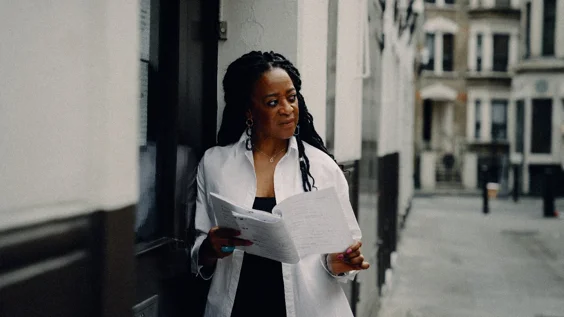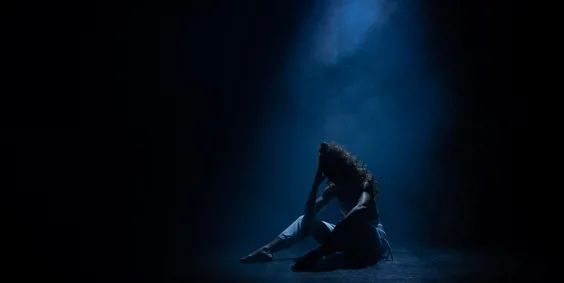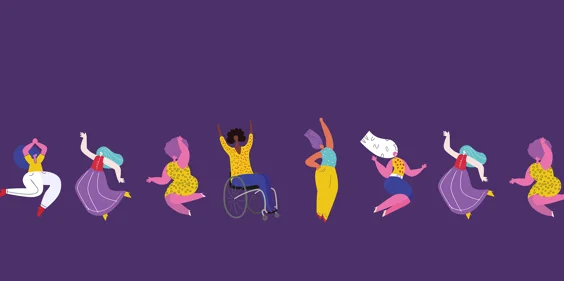On this page
Definition
Sexual Harassment is defined as unwanted conduct (verbal, non-verbal or physical) of a sexual nature that has the intent and/or effect of violating a person’s dignity.
Sexual Harassment creates an intimidating, hostile, degrading, humiliating or offensive environment for people experiencing harassment and those that witness the harassment. Note that:-
- It can happen online as well as in person.
- It can be a one-off incident or a pattern of behaviour.
- You can be impacted by something that is not directly aimed at you.
- It can still be harassment even if the behaviour was not intended to offend.
Recognising sexual harassment
Who can be affected and where?
Sexual harassment can be experienced by anyone no matter their age, ethnicity, position of power, physical appearance or sexual orientation, and it can be experienced by people of all genders.
It can happen in rehearsal and training spaces, backstage, company offices, around accommodation and eating areas, in vehicles or on public transport when travelling between sites, in bars and restaurants or basically anywhere that performers and other creative staff are working or mixing together before, after or during work. Note that behaviour that is unacceptable in a rehearsal room or office is still unacceptable in the bar after work.
Behaviours to look out for
Some behaviours that are included within the sexual harassment definition are more recognisable than others. Some recognisable ones are as follows:-
- Sexual comments, ‘jokes’ and innuendos.
- Suggestive looks, staring or leering.
- Making comments about someone’s appearance.
- Sexual gestures.
- Unwelcome touching, hugging, massaging or kissing.
- Touching without consent during circus performance, training or rehearsal.
- Using excuses to touch someone (moving past someone and putting a hand on their lower back).
- Fetishising and/or exoticising a person's race, cultural heritage, gender identity or disability.
- Making promises in return for sexual ‘favours’.
- Sending unsolicited pictures of a sexual nature.
- Downloading and viewing and /or sending pornographic materials to others.
- Sending sexually explicit texts, DMs, emails to or about someone.
- Sexual assault.
Some less recognisable behaviours are as follows:-
- Following a colleague outside work.
- Sexual posts or contact on social media.
- Grooming – building a relationship with a younger person.
- Photographing or filming others without consent.
- Spreading false rumours about someone’s sex/love life.
- Asking intrusive questions about someone’s sex/love life or graphically discussing their own.
- Asking ‘curious’ questions about the sex/love lives of disabled people or people from the LGBTQIA community.
- Commenting or spreading rumours about a person’s sexual orientation.
- Asking personal questions about a trans and/or gender non-conforming person's genitalia.
Note that neither of the above lists are exhaustive.
Case study: circus
Circus takes place in many forms such as seasonal tented tours, theatre tours, festival engagements, youth circus, training and workshops and also in cabaret venues, clubs and restaurants. In some cases, artists are engaged as freelancers for short engagements and others on a longer-term basis through a circus season. In other settings, artists may just work together at training facilities and not be engaged for paid work. There are also circus schools and youth circuses where artists are trained in circus skills. In all these situations there is potential for bullying and sexual harassment to take place and in circus, artists work in close proximity and the work often requires physical contact.
It is not unusual for power dynamics to exist in workplaces where there are directors and producers working with artists; where there are two or more artists working together or during training. This guide aims to help particularly freelance professional artists to recognise behaviour which is not acceptable and get the necessary support. There is also guidance for anyone working on a project on creating an environment that minimises the chances of sexual harassment happening and on helping to stamp it out.




